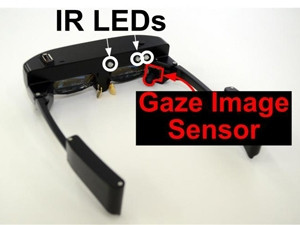
Google Glass may be dead, but technology for smart glasses is still experiencing major developments.
The Korea Advanced Institute of Science and Technology (KAIST) has developed the K-Glass 2, smart glasses where the user's eye movements are tracked and translated into cursor movements, while winks function as commands. The interface has been named the i-Mouse.
The i-Mouse allows users to work completely hands-free, removing the need for them to use their hands or voice to control the smart glasses.
World Wide Worx MD Arthur Goldstruck says the introduction of a new interface in smart glasses technology is not going to have much impact on consumer uptake. However, he believes this type of development will be good for specific task-oriented use "such as Epson developing smart glasses to be used for aircraft repair and maintenance".
Goldstruck explained: "As we saw with Google Glass, wearing smart glasses in public is a non-starter. However, these types of developments will be useful in situations where people's hands are occupied and they need enhanced control and access to information."
Growing opportunity
Professor Hoi-Jun Yoo of the Electrical Engineering Department at KAIST, who led the research team in the development of K-Glass 2, notes the "smart glasses industry will surely grow as we see the Internet of things become commonplace in the future".
To expedite the commercial use of smart glasses, improving the user interface and the user experience are as important as the development of compact-size, low-power wearable platforms with high energy-efficiency, says Yoo.
"Using the i-Mouse, K-Glass 2 can provide complicated augmented reality with low power through eye clicking."
The research results were presented in San Francisco at the Institute of Electrical and Electronics Engineers' International Solid-State Circuits Conference last month.
"The i-Mouse is a new user interface for smart glasses in which the gaze-image sensor (GIS) and object recognition processor are stacked vertically to form a small chip.
"When three infrared LEDs built into the K-Glass 2 are projected into the user's eyes, GIS recognises their focal point and estimates the possible locations of the gaze as the user glances over the display screen. Then the electro-oculography sensor embedded on the nose pads reads the user's eyelid movements, for example, winks, to click the selection," explains Yoo.
Share